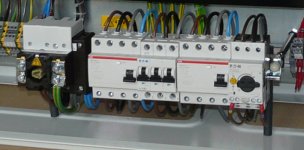Phil Buchanan
Lifetime Supporting Member
I really don't like thru-door disconnects at all and almost always use a flange type unless there are no other options but today we had to build a panel with a thru-door disconnect and I used one of the tools in the video below and it makes all the difference.
I have used almost every other method there is to do these but this makes it a snap and it's made by Schneider but you can use it on any disconnect.
https://www.youtube.com/watch?v=gCx1Yr8A1gc
I have used almost every other method there is to do these but this makes it a snap and it's made by Schneider but you can use it on any disconnect.
https://www.youtube.com/watch?v=gCx1Yr8A1gc





